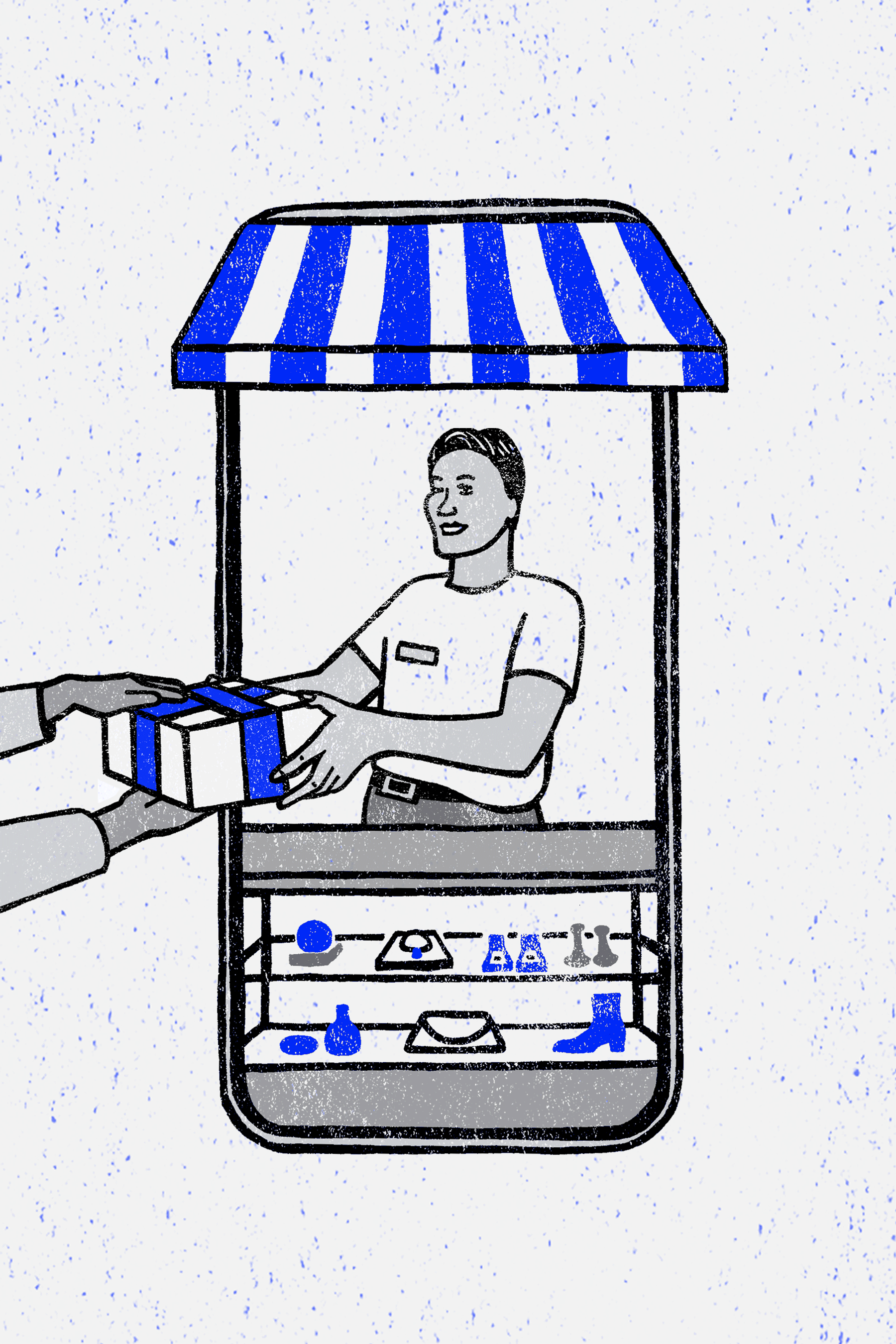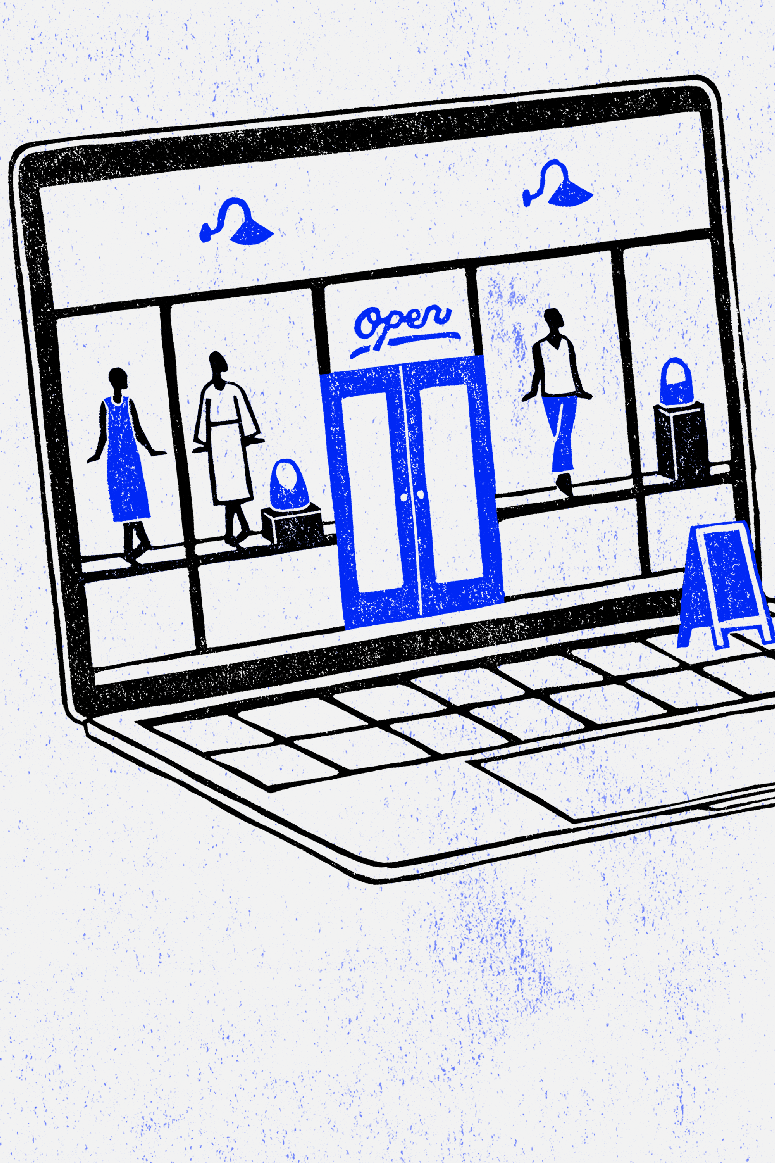With supply chain shortages front-of-mind for shoppers, the key trend this holiday season is the growth in hybrid shopping as consumers look for inventory both in America and across other Western markets.
Customers are expected to predominantly “hybrid shop” this season, meaning they’ll be buying across multiple channels to make sure they can find the products they want. Customers have a lot of tools at their disposal, including the ability to shop on mobile and via social media and to preview items in nearby stores while browsing online, or vice-versa. Shopping journeys can now involve an average of nine different touchpoints, according to Rob Garf, Salesforce VP and GM of retail.
Hybrid shopping and supply chain disruption mean retailers will have to be flexible. The stakes are high going into this year’s holiday season, which finds customers with pent-up demand as pandemic restrictions have loosened since last year. Online shopping will grow: global online sales through November and December are set to rise 7 per cent from last year to reach $1.2 trillion, Salesforce predicts. One quarter of US online customers and one fifth of UK consumers expect to spend more this year overall, Forrester reports. However, this year, supply concerns are driving decisions, which means the role of the store is changing and the overall holiday shopping season has sprawled. At the same time, social shopping is expected to pick up.
“Last year, the headline was all about the last mile, with retailers and brands struggling to get the product to the customer’s doorstep because of the overcapacity of packages compared to the carriers. This year is about the first mile — getting through the port into the domestic supply chain,” says Garf.
Stores will support e-commerce
This year, physical stores will play a more significant role, both for customer research and fulfilment. “One of the biggest innovations we are tracking is how brands are reimagining the role of the store and the store associate,” Garf says. Salesforce predicts that 60 per cent of all digital sales globally will be influenced by visits to physical stores this season.
This type of metric is the reverse of historical measurements that tracked how digital channels influenced in-store purchases. Now, online sales might also be fulfilled by store inventory through buy-online, pick-up-in-store (known as bopis), kerbside pickup, store delivery (products delivered from nearby stores) or ship-from-store.
One-third of US online shoppers plan to visit a store to see an item before buying it, Shopify has found. This is especially true for shoppers younger than 34. Forrester has also found that the “vast majority” of people prefer to check local inventory online before venturing to the store to complete the purchase, says Emily Pfeiffer, senior analyst at Forrester and a specialist in commerce technology. Sensormatic reports that 42 per cent of US consumers will use bopis, up 9 per cent on last year, while 44 per cent say they’ll use kerbside pickup (up 12 per cent). Kerbside pickup is most popular with younger Black Friday and Cyber Monday shoppers, Shopify says, but it’s also on the rise among shoppers over the age of 35. According to Adobe, 40 per cent of all online orders in the US in the two days right before Christmas Eve will be kerbside pickup.
Already, the expanded role of the store in e-commerce has paid off for retailers, Salesforce’s Garf says. This year, the volume of delayed packages could be down by as much as 94 per cent due to improved logistics and kerbside pickup, Salesforce predicts, with only five million packages expected to be at risk of delay in the US — helped by people placing larger and fewer orders. Last year, in the five days leading up to Christmas, retailers with the ability to fulfill orders from stores saw 60 per cent higher revenue growth than those that didn't, Garf says.
Online shopping months, not days
E-commerce will be less fixated on special days such as Cyber Monday. After more than 18 months of delayed deliveries and anxieties about inventory levels, people are likely to shop online earlier and prioritise transparency. In a survey of US shoppers, post-purchase customer experience platform Narvar found that 35 per cent won’t make a purchase if they do not know when the item will arrive. “People are going to bring their shopping forward to make sure they get the gifts and products they want,” Diane Wehrle of Springboard says.
Analysis of search engine activity already proves this point, says Chris Costello, senior director of marketing research at consumer intelligence firm Skai. “Consumer search activity is a good indicator of what the market is doing because it shows consumer interest and purchase intent, and advertisers are making spend decisions based on this activity. Some of this early search behaviour is influenced by last year when the massive surge of Covid-influenced online shopping led to shipping delays. This year’s version of those delays has been related to concerns about supply chain bottlenecks, and retailers have been leaning into earlier promotions to lessen the impact.”
Cyber Week in the US (spanning Thanksgiving Thursday through Monday) will account for just 17 per cent of the holiday season’s e-commerce, Adobe says. Consumers have good reason to start shopping earlier: Adobe reports that “out of stock” messages have risen 172 per cent compared to January 2020, with apparel experiencing the highest levels because of supply chain issues.
Thirty-seven per cent of US consumers plan to shop earlier, prioritising retailers who offer clear delivery estimates, reports Narvar. Half of customers planned to start their shopping before November, while 81 per cent planned to shop before December, according to Sensormatic. A global Condé Nast study found that 39 per cent of Condé Nast's audience globally do their holiday shopping in November and 36 per cent in December; in the US and Germany, roughly half shop in November. Only 7 per cent of US consumers plan to wait until Black Friday (or later) to start looking for deals online, Shopify reports.
Retailers are working hard to be ready. “Coming out of pandemic [restrictions], the biggest lesson in retail is all around logistics and fulfillment — getting the right product into customer hands the way they want at this moment. In fashion, in particular, the need of the moment matters,” says Pfeiffer of Forrester.
Emerging channels
Social commerce, video commerce and mobile commerce are likely to be on the rise — tech platforms most certainly believe so. Adobe expects smartphones to account for 42 per cent of overall revenue this season, up 5 per cent on last year, while Salesforce projects 30 per cent growth in e-commerce traffic from social referrals.
Pinterest, Instagram and Facebook have announced shoppable programming for the holidays. Pinterest’s offer is via its new Pinterest TV, featuring a series of live and shoppable creator-led episodes; every Friday, discounted products from brands including All Birds, Crown Affair, Melody Ehsani and Outdoor Voices will be displayed in a live-shopping setting. Instagram plans a series of Live Shopping events and discounts, housed under a “Holiday Picks” heading in the Instagram Shop tab, plus priced gift guides and a virtual holiday market-style series, starting 5 December. Creator commerce platform Spring has partnered with Instagram to pay creators 100 per cent of profits this holiday on products sold through Instagram. Since early November, Facebook and Instagram have been hosting daily live shopping streams from brands like Benefit Cosmetics, Macy’s, Paintbox Nails, Tanya Taylor, Ulta Beauty and Vuori, incentivising in-app purchases with 20 per cent discounts and free shipping. Additionally, Youtube is hosting a week-long live shopping event starting next week, tied to holiday gifts.
How successful video shopping will be this season remains to be seen, says Forrester’s Pfeiffer. “It’s exciting and makes sense that consumers will move in that direction. Social platforms have been grooming us to shop on them for quite some time.”
Ultimately, Pfeiffer says, there is no single silver bullet for fulfilment. Last year, retailers were often overstocked in warehouses and understocked in stores because consumers wanted to pick up their purchases, she points out. “[This holiday], having all of those options available,” she says, “is terribly important.”
To become a Vogue Business Member and receive the Technology Edit newsletter, click here.
Comments, questions or feedback? Email us at feedback@voguebusiness.com.
Websites used to be secondary to stores. That dynamic is shifting

